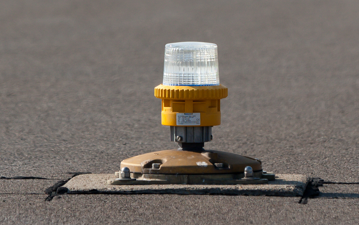Safety Cases for flexible contingent runways
Over the last few years, some single runway airports have converted a parallel taxiway into a secondary runway. The most famous example is Gatwick Airport: the northern runway (08L/26R) was initially a taxiway. Today, it is declared as a runway and can be used as such when the main runway (08R/26L) is not in use for any reason (e.g. maintenance, emergency). In “normal” operations, it is simply used as a taxiway, as the two runways cannot be operated in parallel. The time required for changing over the configuration is only two hours.
Such practice, not defined by ICAO, is referred to in the industry as “switch-on/switch-off runway”, “flexible contingent runway”, or “temporary emergency runway”. It is very convenient when infrastructural development is limited. It enables extensive maintenance works to be carried out on the main runway without having to reduce scheduled operations or to close down the airport.
Nevertheless, such practice is extremely complex to introduce and manage. It requires important infrastructure adaptations, very precise procedures as well as a solid safety case to demonstrate that the concept can be operated safely.
airsight participated in the development of numerous such safety cases, together with airport operators, air navigation service providers, airlines and authorities.
The main difficulty of such project resides in the management and mitigation of risks of confusion, runway incursion, ATC errors as well as risks related to the transition between the runway configurations.
Furthermore, in many cases, a taxiway cannot be fully upgraded to a runway, both in terms of infrastructure and equipment. If compliance cannot be fully achieved, a safety-based approach is required to manage non-compliances, or to prioritise the elements to be upgraded, e.g. runway guard lights, stop bars, markings.
To conclude, a flexible contingency runway may be considered in case no other options for continued operations are available. It can be operated safely, but is associated with numerous restrictions and a comprehensive analysis of risks involved.
Key Facts



